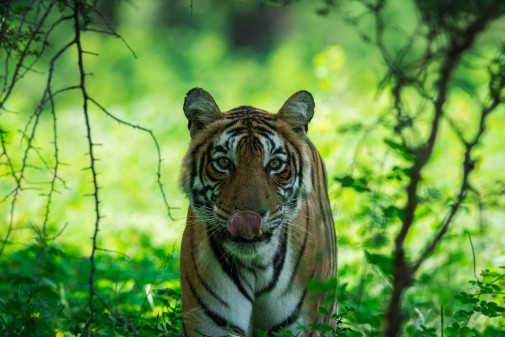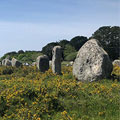Time-series database offers unprecedented picture of global biodiversity change
Posted on 30 May 2025

BioTIME 2.0 offers unprecedented insight into how biodiversity is changing through time across the globe, spanning nearly 150 years of ecological records from 1874 to 2023.
Rapidly changing world
Led by the University of St Andrews and involving 400 institutions, including the University of York, the database tracks species abundance from the Arctic to the Amazon, helping researchers, policymakers, and the public better understand the complex dynamics species face in a rapidly changing world.
The database, published in the journal Global Ecology and Biogeography, dramatically expands on a previous version by including many more places around the world and a wider variety of species. With this update, BioTIME 2.0 now includes nearly 12 million records, representing more than 56,000 species across marine, freshwater, and terrestrial ecosystems.
It contains the most comprehensive record to date of how whole communities of species - or “ecological assemblages” - are changing over time. Unlike just focusing on one species (a "population"), an "assemblage" includes all the different kinds of organisms of the same taxon living together in one place – like all the various flocks of birds on the University of York campus. Assemblage-level data is key to understanding the richness and variety of life in an area.
Vital tool
Dr. Inês Martins, a core member of the BioTIME team based at the Leverhulme Centre for Anthropocene Biodiversity (LCAB) at the University of York, said: "BioTime represents a truly global effort to understand how biodiversity is changing across space and time, I feel truly privileged to be part of this project, and thanks to support from institutions like LCAB, we’ve been able to scale up data integration and curation efforts - ensuring it remains a vital tool for researchers worldwide.
“The work is not over. BioTIME is very much a living database, and our team is committed to continue its development, with more datasets being added in the future.”
Deeper questions
The BioTIME database empowers scientists to look beyond extinction headlines and explore deeper, more nuanced questions of ecosystem and community change in the context of land use, climate change, and conservation efforts over time.
Since its initial release, BioTIME has already underpinned influential studies in biodiversity science and global policy. Researchers have used the database to challenge assumptions about how biodiversity is changing, uncovering more complex patterns of ecological change and also informing conservation strategies.
Global scientific cooperation
Professor Maria Dornelas from the University of St Andrews, who leads the project and is a partner of LCAB, said: “Because we cannot travel in time, biodiversity data from the past is precious to help us understand where and how biodiversity is changing. Human eyes and ears are the main instruments behind this massive data resource. This database is the collective work of hundreds of people, both scientists and citizen scientists, who systematically record species and their abundances over time.”
BioTIME database manager, Dr. Garrett Fundakowski from the University of St Andrews added: “It’s a powerful example of how the scientific community can come together to build something bigger than any one person or team. It serves as a testament to global scientific cooperation in the face of our rapidly changing planet.”
The BioTIME 2.0 database is freely available for use by researchers, conservationists, educators, and the general public at the project website.
Explore more news

Teenage niece may have shaped Jane Austen’s Persuasion, new study suggests
Monday 22 December 2025

Project to examine how AI is changing the way science is done
Wednesday 17 December 2025

Researcher leads global push to cut tobacco harms in people with mental ill health
Monday 15 December 2025

Farmers boosted Europe's biodiversity over the last 12,000 years
Monday 15 December 2025

York researchers behind new map promoting no and low alcohol options across the City
Friday 12 December 2025
